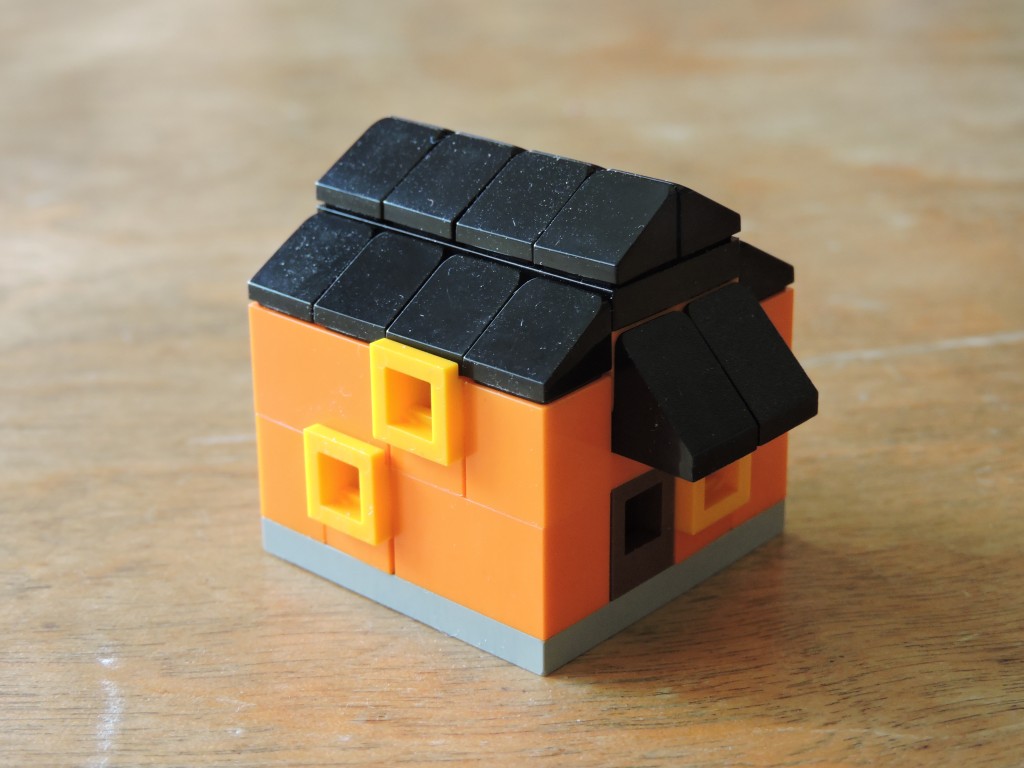
Last week I built three very different houses in the Micropolis scale. This week I’ll add each house to a lot and give it appropriate landscaping. I’ve tried to make sure to place the houses in a landscape that fits their character.
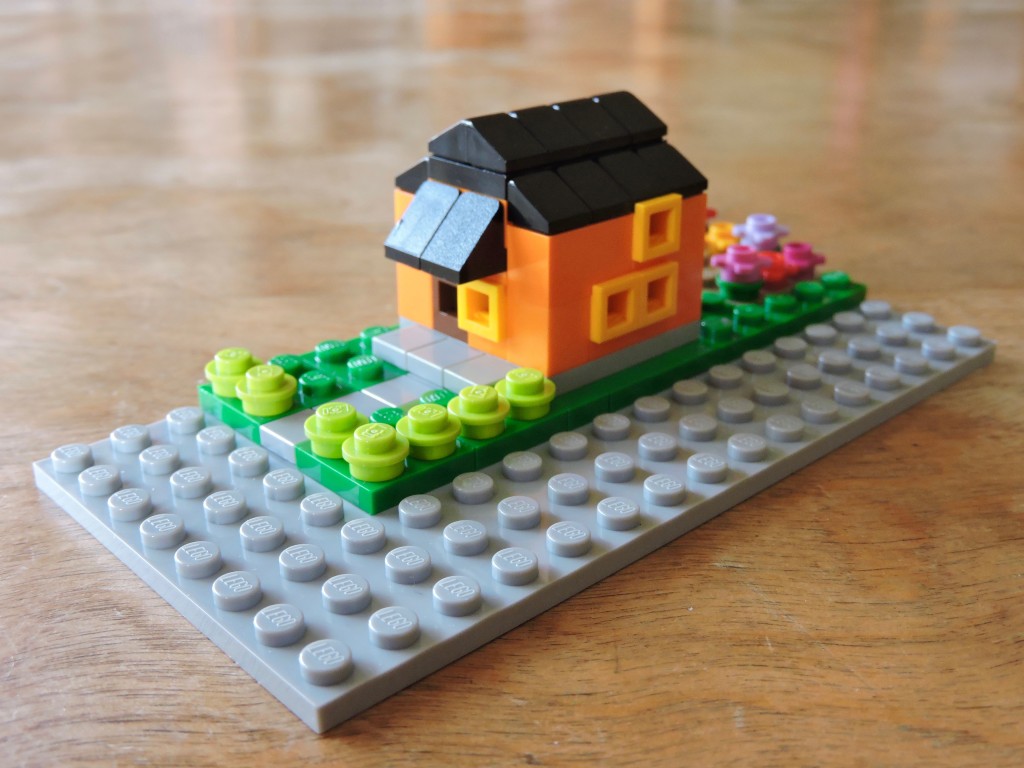
This bright foursquare has the smallest footprint of the houses, so I’ve installed it on a tiny lot made from a half module (8×16 studs). I’ve left the roads and sidewalks unfinished, mostly because I’m having a shortage of necessary elements. I’m seeing some bricklink orders in my future.
With such a small space to work with I kept things simple. A low ‘fence’ of shrubs where I have used lime dots to contrast against the green base. I like to use reserve the use of tiles for man-made surfaces, using plates (and their studs) to represent organic surfaces like grass.
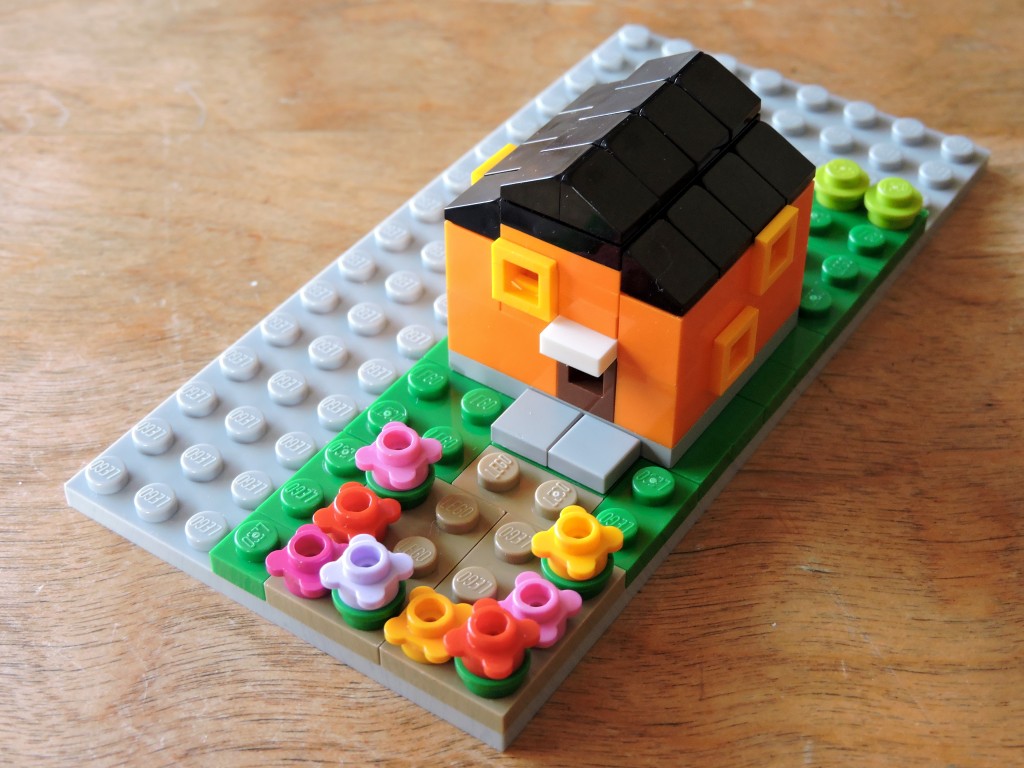
For the back yard, I laid down a layer of dark tan plates to represent a patch of bare earth (or gravel). Around that I arranged mix of flowers, varying the height and color. Now the bright little house has a beautiful flower garden.
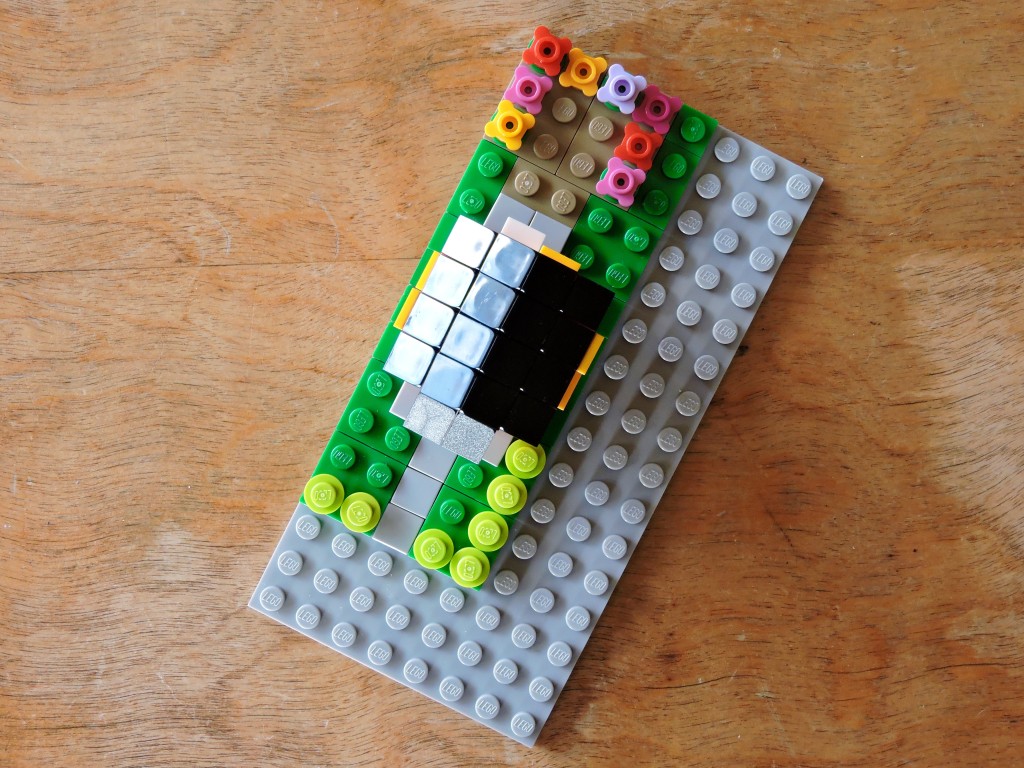
Seen from above, it is easier to appreciate how I’ve used the tiny lot. The house is positioned on jumpers to that there is a half-stud of breathing room from either side of the lot. 5 studs by 13 studs (35.5′ x 97.5′) makes this lot just under 3500 square feet. The average residential lot in the US is 15,000 square feet.
I’ve placed the house to divide the lot roughly in half, giving the back yard a little bit more space. I love the use of tiny space here.
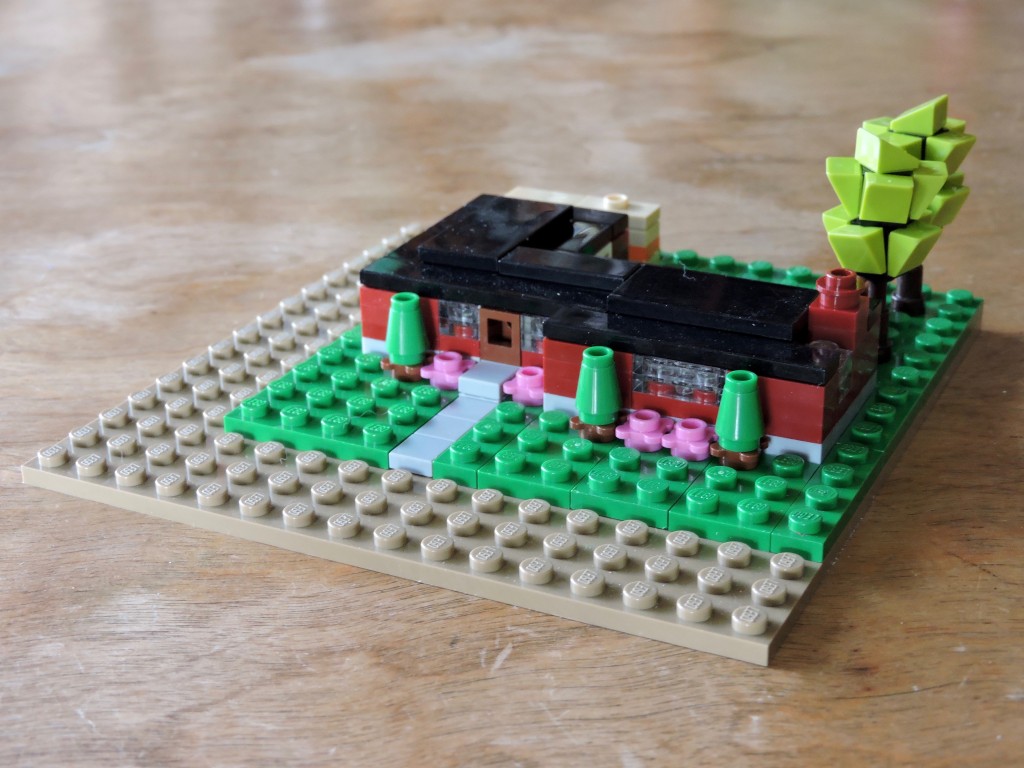
When I went to figure out the how to fit the ranch house into a lot, I realized that I’d made it too big. The original design was 14 studs wide and the buildable area on a single Micropolis modules is 13 x 13 studs. That led to a redesigned footprint, which of course led to a new roof design of terraced plates. This new model didn’t work nearly as well for me until I surrounded it with landscaping.
I set the house back a bit to give a deep front lawn that always reminds me of 50s era houses. The landscaping is simple, with tall shrubs made from tiny cones. The cones work because I’ve set them on top of brown flower plates to set them apart from the green lawn. That helps the eye perceive them as a separate entity. The pink flowers finish it off and provide a nice pop against the otherwise very earthy palette.
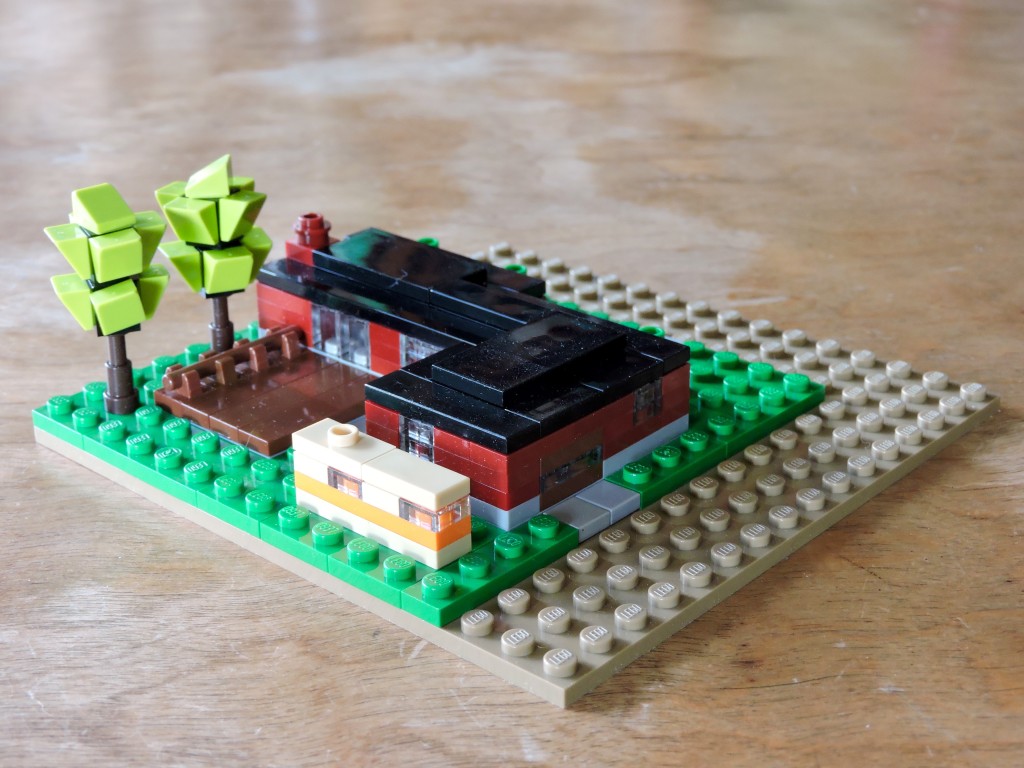
Around the back of the house I’ve built a wooden deck with a railing along one side. I thought about trying to extend the railing, but I didn’t have a clean way to make it turn corners and it would rapidly overshadow the deck. Along the back edge of the lot I’ve added a couple of happy little trees.
The last detail came as I was staring at the empty side yard behind the garage. It struck me that this was the kind of home that I’d expect to belong to retirees and what is boomer retirement without a recreational vehicle? A tan and orange RV added the last bit of character that this house needed.
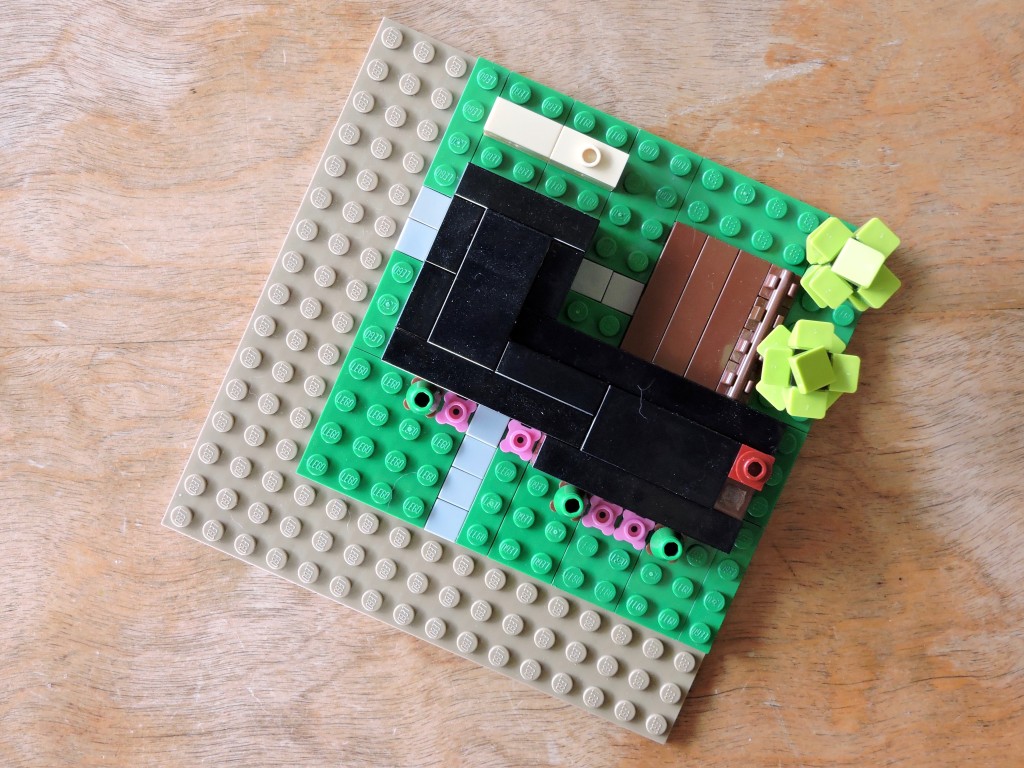
From above you can see that I’ve tried to balance the use of space to provide big lawns but keep the lot from feeling empty. The trees are placed so that they don’t hang over the edge of the module (though it doesn’t appear that way in my photo), which is important, since I have no idea what the neighbors will be like.
Planning in small buffer zones is important with Micropolis modules. Buildings, especially residential, rarely but up against each other directly. It’s much better the plan for alleys and right-of-ways.
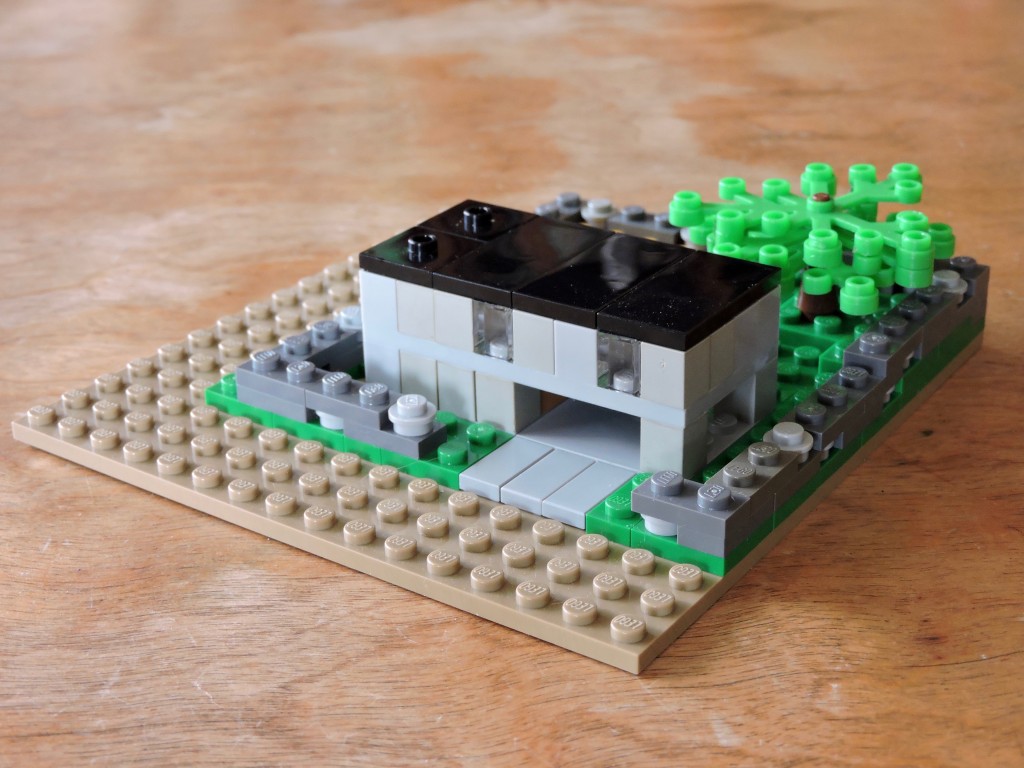
For this last house in the series, I tried to think about texture. I surrounded the house with a rough stone wall (two plates means that it would be 6′ tall). I mixed light grey dots and dark gray plates to imply the packed stone of a gabion wall.
Otherwise there isn’t much yard up front. I left a thin green space around the front, but reserved the majority of the space for the back yard.
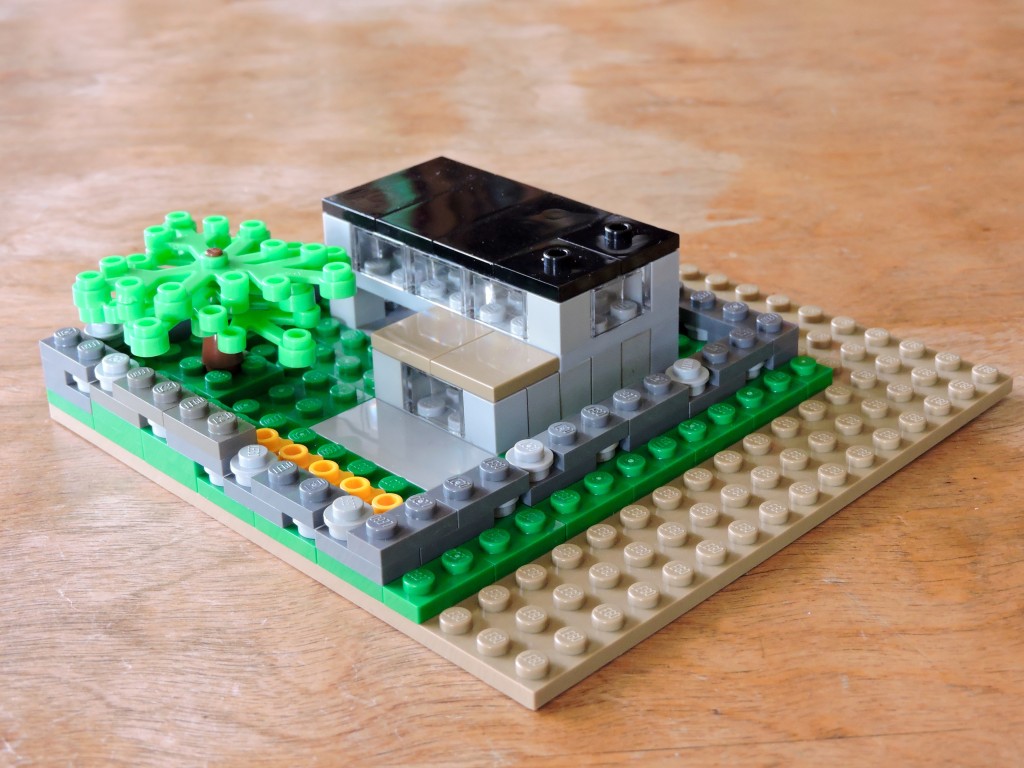
As I noted last week, this house opens up to the back, and I wanted to provide a luxurious (though understated) space. I’ve built up the back corner by an extra plate, allowing the wall to follow the contour, to depict a shallow hill. On top of that is a broad leafy tree (my posted style) with vivid foliage.
The house’s second story deck overlooks a concrete patio of similar size and a bright row of flowers along the fence line. I resisted the urge to add more detail, wanting to keep the whole clean and modern look. The mind fills in most of the gaps nicely, adding railings and other fixtures too small to represent at this scale.
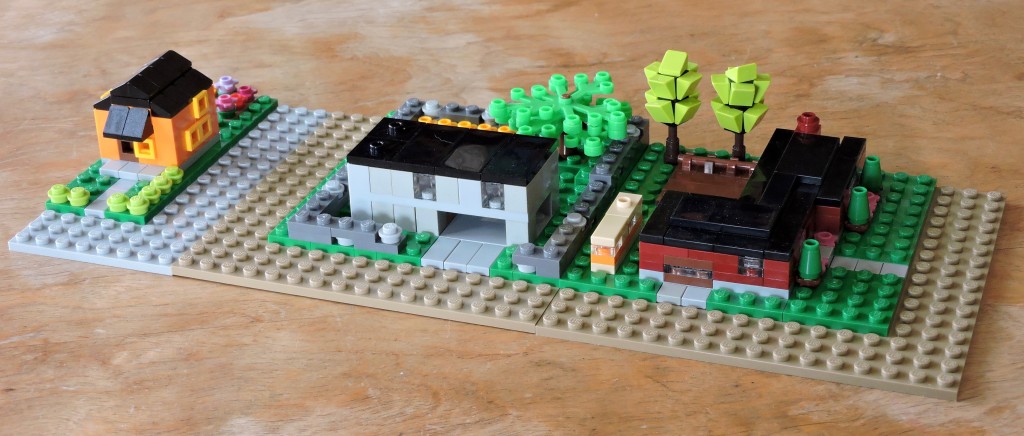
All together, the three houses feel great. When I eventually add the roads, sidewalks, and bases below, they’ll make nice additions to the neighborhood.
Next week I’ll explore multi-family dwellings!
Keep building and enjoy!
I really like your posts. Please keep doing them. 🙂
This is great, I’m loving following along. Maybe the Little Brick Root blog should start a Micropovember architecture contest?
Ooh, maybe I’ll try for Maycropolis in spring. Glad you’re enjoying my posts!
Way better name and a lot more time to build up my parts inventory. I’m in.
I like your scaling. It feels real, as though it’s tiny enough but large enough that the details are believable. I’m going to copy your houses before I start my own so I can get the feel for it.